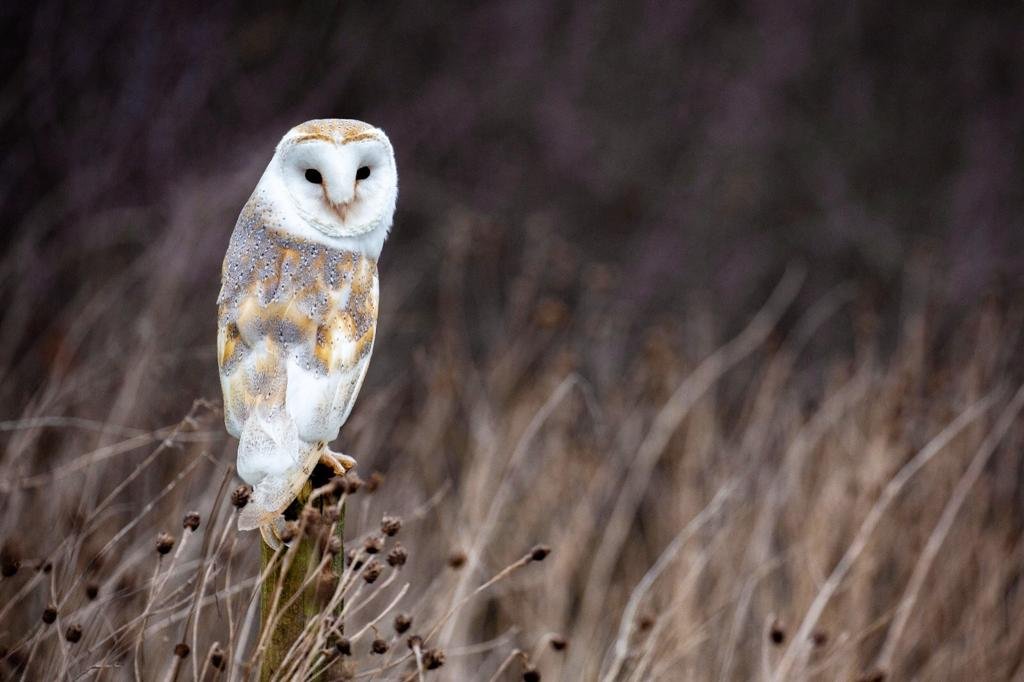Barn Owl Season
We welcome again Dr Oliver Fox as a guest writer to our Thoughts. Every few weeks, Olly and his team of ornithologists, Ian Sherriffs and Noah Walker, wake up in the early hours to make their way to the meadows to understand what birdlife call this small sanctuary their home. From native British owls, herons, ducks and kingfishers, to species that have travelled far and wide to raise their young on the banks of the River Leach.
Dr Oliver Fox, West Oxfordshire Farmland Bird Project
Few animals have such a strong link with the water meadows at Thyme as the Barn Owl. Present all year around but only fleetingly seen or heard at dawn and dusk when they’re travelling to and from their roosting spots inside tree trunk hollows or the artificial nest boxes provided for them. It has been an unalloyed privilege to spend time in the meadows over the last few years and to regularly see the owls hunting over the rough grassland, quartering up and down the lengths of the fields, hovering momentarily with their head turned towards the earth, before dropping silently onto their unsuspecting prey.
With their feathers adapted to fly silently through the cool evening air, often the only indication of the owl’s presence is their other-worldly screech call that can be quite disconcerting if caught unawares as dark approaches. Particularly on calm nights, the screech noise carries far across the landscape, as distinctive as the Tawny Owl’s familiar hoot.
At Southrop, the Barn Owls benefit hugely from the artificial nest boxes located around the meadows and gardens to provide safe, dry nesting sites year after year. Once an adult pair takes up residence in one of the boxes they will tend to stay there for a number of years, rearing one, and sometimes two, broods of young owls each season. This year we have been lucky to record two pairs of owls breeding in the boxes installed near the river.
The first signs of Barn Owl nests at Thyme were recorded back in early April when a pair of birds were seen in the woodshed nest box, the paler male bird flushed from the beams of the shed and darted out along the hedges. His mate was more reluctant to move and stayed put when we raised the lid to take a quick peek in the nest box. In early spring birds will form their breeding pairs and will roost around the nest site until the eggs are laid. We returned to the box on a calm evening in early June and recorded the darker female bird incubating two eggs. This year we have seen many owls only laying two or three eggs – perhaps in response to the amount of prey on offer in the surrounding countryside.
The eggs hatched in mid-June and the adults increased their hunting rounds to bring in field voles and mice from the water meadows, even caching excess food in the box for the hungry chicks. Consequently, the two young owls grew very quickly, turning from fluffy balls of white down into fully-feathered owls in just a few weeks. Recently, we went back to the nest box to put coded metal rings on the young birds so they can be identified once they fledge and disperse away from the nest. Once the feathers are half-grown the sex of the chicks can be determined – the males have pure white feather on their underwings and the females have feathers flecked with grey spots. By now the birds will have left the nest box but could be returning there to roost and still benefit from some feeding from the adult pair.
Another new nest box situated on a large oak tree near the river held its first breeding birds this year too. Having two pairs nesting close together like this is testament to the abundance of small mammal prey in the water meadows and the health of the ecosystem as a whole. We first found signs of breeding in mid-May when both adults were in the box together with 3 eggs, each laid two days apart to ensure the a staggered hatching. By the second week of June four eggs had hatched and the small, vulnerable young were being fed by the adults with torn up pieces of their prey. On our next visit in early July we were pleased to see that all four of the chicks had survived and were looking healthy, another indicator of the amount of food the adults were able to find.
The dry conditions over the summer were favourable for hunting owls and to have six birds fledge from two nest boxes at Thyme is a wonderful achievement. Perhaps some of these young birds will turn up at nest boxes at neighbouring farms or even further field.
All our nest box visits and bird ringing is carried out by fully-trained team members holding a Schedule 1 license for disturbing Barn Owls during the breeding season and the necessary permits from the British Trust for Ornithology.
West Oxfordshire Farmland Bird Project is run by a small team of volunteers to promote conservation, research and engagement with several local farmers and landowners. The project aims to help turn around the worrying declines in farmland bird populations seen in the UK over the last 50 years, through the promotion of wildlife-friendly management practices, environmental stewardship options and awareness of challenges faced by farmland birds throughout their life cycles. Over the last five years the project has worked on a large number of farms on the conservation of several key species, including Corn Buntings, Yellowhammers, Reed Buntings, Tree Sparrows and Barn Owls.
For more updates, follow the West Oxfordshire Farmland Bird Project on Twitter.




